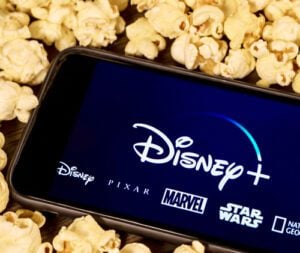It’s not a good week for Netflix.
The streaming giant flubbed its second-ever livestream on Sunday. Instead of catching the live reunion episode of “Love Is Blind,” distressed fans blew up social media with enough complaints to top off Twitter’s What’s Happening feed with “#LoveIsLate.” Ouch.
Love was so late that Netflix had to upload an on-demand episode the following day for viewers who wouldn’t (or couldn’t) wait the nearly two hours it took for the live episode to finally hit the airwaves that night. (So much for appointment viewing.)
“We’re really sorry to have disappointed people – we didn’t meet the standards that we expected of ourselves,” Netflix co-CEO Greg Peters tells investors.
“But just to be clear from a technical perspective – we do have the infrastructure [for live programming],” he says. “We just had a bug.”
Still, the very public blunder looks especially bad for Netflix just weeks out from its first-ever upfront presentation to advertisers.
Where’s the love?
To be fair, Netflix is brand-spanking new to live programming. And its first-ever livestream, of Chris Rock’s comedy special last month, went just fine.
Netflix says it made updates to its livestream tech after the Chris Rock special, and it blames a bug introduced in those updates for its “Love Is Blind” fail. It’s also possible the sheer volume of viewers tuning in to this fan favorite at the same time overwhelmed Netflix’s servers.
But it may not be a good enough excuse when the streaming competition is getting fiercer. Advertisers have a record amount of streaming services they can spend against and are also under intense economic pressure to justify every dollar spent.
Now what?
This faux pas raises a very critical question about Netflix: Can it really handle live programming?
Most of Netflix’s competition comes from streaming services owned by national broadcasters that already have decades of experience airing live linear content (think NBCUniversal and Warner Bros. Discovery). Live content is also catnip to advertisers, who crave water-cooler moments (and the fact you can’t use a DVR to fast-forward through ads during live content). Some programmers with streaming services are bundling their on-demand and live inventory for this year’s upfronts to offer broader scale to advertisers.
Netflix, on the other hand, was born strictly in the streaming world. But it is determined to compete directly with other TV broadcasters – hence the decision to join the upfronts instead of NewFronts.
But when it comes to Netflix’s ability to air live programming, so far, not so good.
Other streaming services, including Peacock and Hulu, took the chance to mock Netflix on Twitter, a clear way of signaling that they themselves wouldn’t run into this sort of problem. (Both Hulu and Peacock livestream news and sports.)
Even Blockbuster kicked Netflix while it was down. The video rental company, which went out of business nearly 10 years ago while viewers ditched it for Netflix, tweeted, “This is what we get,” to which Redbox replied, “Solidarity, bro.”
So, should Netflix stick to on-demand video?
Well, on-demand streaming is clearly what Netflix is good at. But if Netflix insists on going toe-to-toe with other TV programmers that are already juggling both live and on-demand content, then it’s unlikely to back down without a fight.
Let me know what you think. Hit me up at [email protected].



















